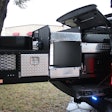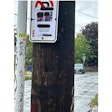It's 4 a.m. Your shift is about over. But your radio crackles. You're being dispatched to a job across town.
You turn the corner and see a large male standing in front of the address. He's younger than you, bigger than you, and he sports prison tattoos. You smell alcohol on his breath and marijuana smoke on his body. He also may be armed, but you have to drive him to wherever he wants to go.
Welcome to the world of a taxi driver.
Easy Targets
Driving a taxi is one of the most dangerous professions. Drivers are sent alone to isolated areas, including high-crime neighborhoods to pick up strangers. They work early mornings and late nights, and they carry a lot of cash. So it's not surprising that taxi drivers are often assaulted, robbed, and killed.
Gathering Intel
To combat crimes against taxi drivers, you must first do some research into what types of drivers are in your area.
The two basic types of cab drivers are "hackney" cabs or gypsy cabs who work independently, cruising a city looking for fares, and "livery" cabs dispatched by a central office.
Knowing what types of cabs are working in your town will help you establish a pattern of crime. You will also want to establish a criminal profile on the victims and on the bad guys.
The first step may be to generate a survey. This survey should be disseminated to the drivers in the hopes of getting a clear picture of the criminal problem. The survey would obviously include how often the driver has been victimized or threatened. You can also use the survey to establish pedigree information of the actor (gender, ethnicity, race, age, etc).
Some other important questions that you can use to gain valuable intel include:
- Did the offense seem pre-planned or was it a crime of opportunity?
- Did the offender seem experienced or was this a random act?
- Was the offender armed?
- What part of town did the offense occur?
- Where was the fare picked up?
- What was the destination?
- Where did the actual offense occur?
- At what time did the offense occur? At the beginning of the shift? At the end of a shift? On a busy night? On a slow night?
- Are the crimes seasonal?
Partners in Crime Prevention
Your agency may want to conduct training seminars designed to educate drivers as to how they can avoid being victimized.
Some assaultive behavior can be traced to the conduct of the drivers themselves. Overcharging and taking the longest way possible is almost sure to elicit a negative passenger response. And, yes, some taxi drivers are just plain nasty people who are nasty to their customers. You may want to educate them on a version of verbal judo and help them see that treating their customers better will make them safer.
Drivers should also be trained not to chase fare evaders. An unarmed driver with no portable radio chasing an unknown suspect in an unknown area with little chance of police response is a bad scenario.
Your agency can also persuade the taxi companies to institute a policy that requires the dispatcher to confirm the fare with a call back number, be it a residence, business, or cell phone number. Also, the driver and dispatch can establish a secret code that allows the driver to surreptitiously advise of a potentially troublesome passenger.
Drivers can also practice some common sense measures that will make them safer. Prior to allowing a passenger to enter his or her cab, the driver should get some form of identification and log it on a sheet or relay it to dispatch. The driver should also report the stated destination to dispatch.
Partnerships can also be developed between the taxi company and your agency that allow cabs in which drivers have reported troublesome passengers to be stopped and checked in absence of a motor vehicle violation. Though most drivers are pretty street savvy, you can also talk to drivers and make sure that they have a list of "safe spots" that can be accessed at all hours.
Community Response
If you determine that crimes are emanating from an area where many bars are located, your agency may want to work with the community and establish a taxi stand. All patrons who want a taxi ride would have to stand at a certain corner. The corner should be clearly lit and monitored by video cams, and maybe even an officer should be posted there from an hour before until an hour after bar closing time.
Another tactic that is very effective in stopping taxi crime is to employ decoy drivers. Plainclothes officers can stand in for real taxi drivers in the hope of luring predators into the cab. This is a very dangerous operation because the officers have to work alone, but it may be a last resort in the case of a serial taxi driver robbery suspect.


















